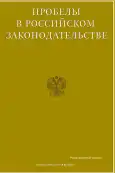Self-Protection and Fighting Techniques in the Activities of Departmentof Internal Affairs Employees
- Authors: Dottuev T.I.1
-
Affiliations:
- North Caucasus Institute for Advanced Studies (branch) of the Krasnodar University of the Ministry of Internal Affairs of Russia
- Issue: Vol 15, No 4 (2022)
- Pages: 90-94
- Section: Articles
- URL: https://journals.eco-vector.com/2072-3164/article/view/531572
- ID: 531572
Cite item
Abstract
The purpose of this study is to study the significance of self-defense and fighting techniques used by law enforcement officers to detain resisting offenders, as well as to fight when attacked by antisocial elements. Self-defense training is the study of the techniques of various martial arts and martial arts to protect one's life and health from encroachment by other people. The use of self-defense techniques is allowed only in extreme cases to protect against an attacking person, the purpose of which can be either mutilation or deprivation of life, or an attack in order to seize a weapon. Self-defense is not aimed at inflicting grievous bodily harm or depriving the attacker of his life, it is aimed at rebuffing him and depriving him of the desire to continue to act aggressively against the offender. Self-defense techniques are studied during training in educational institutions of the Ministry of Internal Affairs of Russia and are improved throughout the service during professional-applied physical training and independently. Fighting techniques have certain differences from self-defense techniques. The first and most important difference is that they are not used to protect against the attacker, but to stop the aggression of the offender. Fighting techniques include various grips, throws, techniques aimed at strangulation, painful techniques. All these techniques are used to immobilize the offender, detain him and escort him to the nearest police station. Most often, employees of the internal affairs bodies use methods of detention and escort, protection from attacks by an armed and unarmed offender, disarmament. At the same time, not every offender expresses a willingness to obey the lawful demands of an employee of the internal affairs bodies, and can resist and fight back, and here the employee must use the entire arsenal of techniques available to him to detain and escort the criminal to the police department.
Full Text
About the authors
Tengiz Idrisovich Dottuev
North Caucasus Institute for Advanced Studies (branch) of the Krasnodar University of the Ministry of Internal Affairs of Russia
Email: kodzokov.aznaur@bk.ru
police major, Lecturer of the Department of Physical Training Nalchik, Russia
References
- Order of the Ministry of Internal Affairs of Russia dated July 1, 2017 No. 450 “On approval of the Manual on the organization of physical training in the internal affairs bodies of the Russian Federation” [Electronic resource] // Access mode: https://www.garant.ru/products/ipo /prime/doc/71647620/ (accessed 04/24/2022).
- Afov A.Kh. Improving the skills of fighting techniques in the process of physical training in the universities of the Ministry of Internal Affairs of Russia // Scientific Review: Humanitarian Studies. 2018. №2. pp. 14-20.
- Dadov A.V. The effectiveness of training police officers in the use of physical influence // Education. The science. Scientific personnel. 2020. No. 2. S. 210-212.
- Dadov A.V., Tkhazeplov A.M. Methodology for improving the skills of detaining offenders in physical training classes in educational institutions of the Ministry of Internal Affairs of Russia // Pedagogical journal. 2018. Vol. 8. No. 3A. pp. 52-59.
- Dottuev T.I. Methodology for building a training process in training employees of the Russian Internal Affairs Department in combat fighting techniques // Education. The science. Scientific personnel. 2019. No. 1. pp. 151-153.
- Kodzokov A.Kh. The frequency of use of fighting techniques in the practice of applying coercive measures to offenders // In the collection: Physical education and sport: topical issues of theory and practice. Collection of materials of the All-Russian scientific-practical conference. FGKOU VO "Rostov Law Institute" of the Ministry of Internal Affairs of Russia. 2016. pp. 79-84.
- Kodzokov A.Kh., Kanukoev A.M. Methods of teaching protective actions against blows to students of educational organizations of the Ministry of Internal Affairs of Russia // Pedagogical journal. 2020. Vol. 10. No. 3-1. pp. 488-493.
- Meshev I.Kh. Development of skills in the use of physical force and combat techniques in the struggle of future employees of the internal affairs bodies of the Russian Federation // Pedagogical journal. 2018. V. 8. No. 5A. pp. 133-138.
- Tkhazeplov R.L. Formation of skills in the use of combat techniques of struggle among students of educational organizations of the Ministry of Internal Affairs of Russia // Education. The science. Scientific personnel. 2020. No. 2. pp. 274-276.
- Khazhirokov V.A. The limits of the legality of the use of physical force, special means and firearms by police officers // Gaps in Russian legislation. 2020. V. 13. No. 4. pp. 138-141.
Supplementary files








